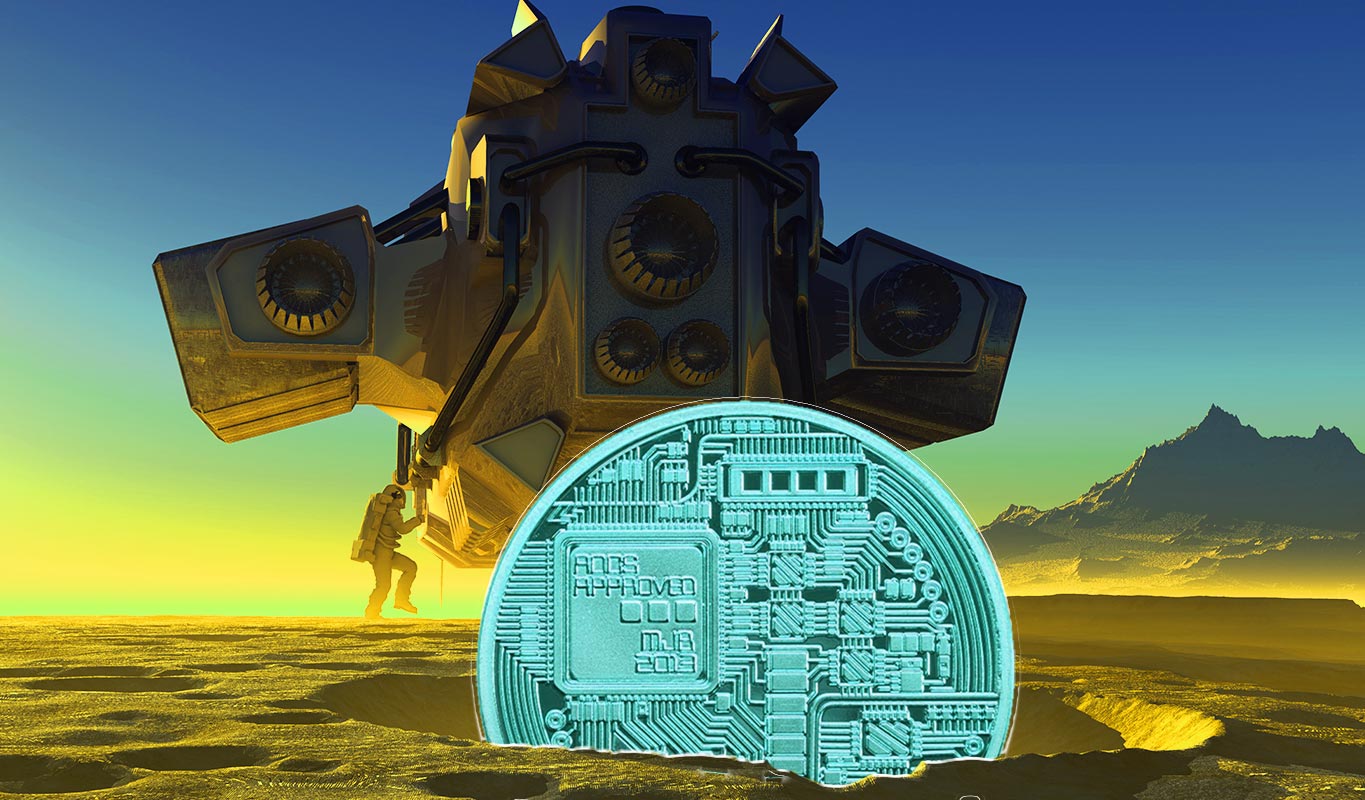HodlX
Developing in Web 3.0 Is on the Cusp of a Breakthrough
Published
2 days agoon
By
admin
HodlX Guest Post Submit Your Post
What does a utopia for Web 3.0 look like? Understanding and addressing developers’ pain points is essential – not just for individual projects but for the entire, ever-evolving Web 3.0 landscape.
Much like how Web 2.0 visionaries turned the digital era from an unknown frontier into a global norm, Web 3.0 is on a similar transformative journey.
By fostering an environment that supports builders and innovators, we can unlock the full potential of decentralized technologies and drive forward the next digital revolution.
Web 3.0 will not succeed until we understand and solve the challenges
Onboarding to Web 3.0 is complex. Developers face a steep learning curve – not only in coming to terms with complex technology from the whole Web 3.0 ecosystem but also in having numerous protocols to choose from, each with unique offerings.
This can be overwhelming and time-consuming as developers work to keep pace with the latest advancements and best practices of different solutions.
Another challenge is the lack of Web 3.0 user adoption and stories around clear, real examples that have a tangible impact in today’s world.
Some of this is due to regulatory uncertainties and some is due to balancing the benefits of decentralized systems with the convenience of centralized processes.
All pioneers of change face these challenges. The case was the same with the introduction of Web 1.0 and then the more refined Web 2.0.
During the prime of Web 2.0, we quickly established standards on things like security and community, which sheltered the end user from these elements.
On the flip side, Web 3.0 places significant emphasis on the underlying technology itself, which can be confusing for non-technical people, hindering adoption.
Then comes the biggest challenge – developer experience. The finesse of Web 2.0, with efficient onboarding and simple documentation, is something Web 3.0 is still working towards.
Not only is this a huge challenge for developers but there is also a profound gap between developers exploring protocols superficially versus a developer actively learning all that is required to create complex DApps, as well as making active improvements to ease the journey for others.
Solutions paving the way for Web 3.0 mass adoption
Fortunately, several protocols are addressing the complexities of onboarding – from tools that simplify development, to solutions that support interoperability with EVM support, to frontend tools that smooth out user experiences such as wallet connectivity.
Combined, these tools will go a long way to ease the process for developers to onboard and build user-ready applications.
Protocols and developers who are the visionaries of Web 3.0 are building use cases that can be adopted right now to transform so many verticals.
Virtually every protocol has a wealth of resources to try and improve the developer experience – from comprehensive documentation, guides and video tutorials to the more practical elements of producing physical, conducive learning environments for developers across the globe.
These quality educational initiatives will lead to a better developer experience, extensive feedback for projects and the building of DApps, which can change the landscape.
Unleashing the Web 3.0 breakthrough
We see more and more developers exploring, creating and questioning to better their understanding.
Similarly, protocols are also experimenting and creating new opportunities for the community – be it virtual hackathons, physical boot camps, grants or competitions.
Each of these initiatives provides different entry points to the Web 3.0 ecosystem.
As we navigate through the challenges of onboarding and adoption, the visionary protocols and developers alike are laying the groundwork for a decentralized future.
These barriers of today are opportunities to define, refine and advance the ecosystem.
The ongoing commitment to improving the developer experience and resources will certainly help to transform this space.
We are seeing more adoption than previously seen by mainstream companies and even different governments who are exploring the use of Web 3.0.
Together, we will transform today’s challenges into tomorrow’s achievements, crafting a digital utopia that empowers and inspires future generations.
Payal Patel serves as head of the developer advocacy unit at Cartesi since 2023. Payal is dedicated to enhancing the developer journey within the Cartesi ecosystem. She believes in the transformative potential of Web 3.0 and is enthusiastic about contributing to its growth and evolution.
Follow Us on Twitter Facebook Telegram

Disclaimer: Opinions expressed at The Daily Hodl are not investment advice. Investors should do their due diligence before making any high-risk investments in Bitcoin, cryptocurrency or digital assets. Please be advised that your transfers and trades are at your own risk, and any loses you may incur are your responsibility. The Daily Hodl does not recommend the buying or selling of any cryptocurrencies or digital assets, nor is The Daily Hodl an investment advisor. Please note that The Daily Hodl participates in affiliate marketing.
Generated Image: Midjourney
Source link
You may like


MATIC Price Crash: Reaching A Two Year Low


Multicoin Pledges up to $1M for Pro-Crypto Senate Candidates


Crypto heists near $1.4b in first half of 2024: TRM Labs


FTX Founder Sam Bankman-Fried’s Family Accused Of $100M Illicit Political Donation


Bitcoin Price Falls as Mt Gox Starts Repayments


20% Price Drop Follows $87 Million Spending Outrage
HodlX
Crypto’s Integration With Social Media Will Shift Global Finance Forever
Published
1 week agoon
June 27, 2024By
admin
HodlX Guest Post Submit Your Post
The direct integration of cryptocurrency payment methods into social media platforms is poised to revolutionize global finance as we know it.
This shift is supported by the substantial user bases and advanced anti-fraud measures on these platforms, promising to democratize access to financially inclusive offerings, especially in developing countries.
Today, social media already plays a significant role in billions of people’s lives – especially among Gen Z – and successful models like TikTok and WeChat only underscore its ubiquity.
While challenges for integrating decentralized payments into social media platforms do exist, the evolution of banking products and ever-increasing adoption of cryptocurrencies signal a new era on the horizon of global finance.
This new era hinges on the merging of blockchain-based payments and traditional social media platforms.
Shortcomings of the traditional banking system
While robust, the traditional banking system often struggles with inefficiencies, such as high transaction fees, lengthy processing times and limited accessibility for unbanked or underbanked individuals.
These shortcomings hinder financial inclusion and create barriers for individuals and businesses in developing economies.
As a result, there is an increased demand for more agile, inclusive and cost-effective financial solutions.
Digital payments and cryptocurrencies are rapidly gaining traction as viable alternatives to conventional banking.
In particular, cryptocurrencies are uniquely qualified to offer decentralized, borderless and transparent financial transactions – something that reduces the reliance on traditional financial institutions.
This shift towards digital finance is already enhancing transaction efficiency, and it’s also set to pave the way for innovative financial services that cater to a global audience.
As social media platforms begin to integrate these technologies into their core offerings, the potential for a more interconnected and inclusive financial system becomes increasingly tangible.
The new potential of social media platforms
Social media platforms boast enormous user bases, far surpassing the reach of traditional banking institutions.
As of 2023, there are over 4.9 billion social media users worldwide, with platforms like Facebook, Instagram and TikTok leading the charge.
In contrast, traditional banks do not match the same level of daily engagement and global reach.
While 76% of the world population has a bank account, a vast number do not have access to traditional financial institutions.
In fact, 22% of American adults are either unbanked or underbanked, and almost 1.5 billion individuals are unbanked around the world.
Social media’s vast user base presents an unparalleled opportunity to integrate financial services directly into social media platforms, making financial inclusion more accessible and engaging for a diverse population.
Additionally, banks typically cater to a more localized audience and face challenges in penetrating remote or underserved areas.
Social media platforms, however, are inherently global, with users from every corner of the world interacting with them daily.
Social media platforms have also implemented sophisticated anti-fraud technologies to protect users and transactions.
These include machine learning algorithms that detect suspicious activities, multi-factor authentication and real-time monitoring systems.
For instance, Facebook and Instagram use AI to identify and mitigate fraudulent behavior swiftly, enhancing the security of their platforms.
These measures can be leveraged to secure cryptocurrency transactions, providing users with a safer and more trustworthy environment for digital financial activities.
With over 1.2 billion monthly active users as of 2023, WeChat has seamlessly blended messaging, social media and a wide array of financial services, including payments, investments and even loans into its offering.
The platform’s advanced anti-fraud technologies, such as facial recognition and real-time transaction monitoring, have significantly reduced fraudulent activities, setting a benchmark for other platforms looking to integrate cryptocurrency transactions.
WeChat’s success demonstrates that integrating financial services into social media is not only feasible but also beneficial, providing valuable lessons for other platforms aiming to enhance their financial offerings.
Financial inclusion in developing countries
Individuals in developing regions often face significant barriers to accessing traditional banking systems, with challenges that include a lack of physical bank branches, stringent documentation requirements and high transaction fees.
This exclusion from the formal financial system hampers economic participation and growth, limiting opportunities for savings, credit and investments.
Cryptocurrency – integrated through social media platforms – can help bypass these traditional banking barriers and offer a decentralized, accessible and cost-effective alternative for financial transactions, making it easier for unbanked populations to participate in the global economy.
Social media, with its extensive reach and user engagement, can play a crucial role in bridging the financial gap.
Integrating cryptocurrencies into social media platforms can bring long-term benefits for economic growth and stability.
For instance, mobile money services like M-Pesa have already demonstrated significant positive impacts when it comes to financial inclusion and economic stability in Kenya and other African countries.
By expanding this model to include cryptocurrencies via social media, even more individuals can benefit from secure, low-cost financial services.
This integration can stimulate economic activity, support entrepreneurial endeavors and enhance overall financial resilience – contributing to sustainable economic development and poverty alleviation.
The future of global finance via social media
The evolution of banking products faces significant challenges, as evidenced by Facebook’s Libra project, which encountered regulatory hurdles and skepticism from financial authorities.
However, despite these obstacles, the potential for social media platforms to innovate and offer new types of financial products remains unmatched.
Future trends could include integrated digital wallets, peer-to-peer lending platforms and decentralized financial services directly accessible through social media, transforming how individuals interact with and manage their finances.
There’s no question that the integration of social media and cryptocurrencies is set to redefine the landscape of global finance.
Social media platforms, with their vast user bases and advanced technological infrastructure, are uniquely positioned to bridge the financial gap and democratize access to decentralized financial services.
This transformation holds the promise of more inclusive, efficient and secure financial interactions, paving the way for a future where financial empowerment is within reach for everyone – regardless of their geographical or economic circumstances.
Alexander Mamasidikov is the founder and CEO of CrossFi. Alexander is a recognized expert in crypto and digital marketing, having founded the IEO Agency and worked with over 72 projects in international fintech and blockchain.
Follow Us on Twitter Facebook Telegram

Disclaimer: Opinions expressed at The Daily Hodl are not investment advice. Investors should do their due diligence before making any high-risk investments in Bitcoin, cryptocurrency or digital assets. Please be advised that your transfers and trades are at your own risk, and any loses you may incur are your responsibility. The Daily Hodl does not recommend the buying or selling of any cryptocurrencies or digital assets, nor is The Daily Hodl an investment advisor. Please note that The Daily Hodl participates in affiliate marketing.
Featured Image: Shutterstock/noEnde
Source link
HodlX
A Stronger Web 3.0 Means (Strategically) Working With Centralized Entities
Published
1 week agoon
June 25, 2024By
admin
HodlX Guest Post Submit Your Post
The crypto industry is unlike any other space for many reasons. But perhaps the primary difference between crypto – and Web 3.0 in general – and mainstream tech or the auto industry, for example, is removing dependency on centralized, trusted authorities.
From DAOs and DEXs to DApps, DeFi (decentralized finance) is an irreplaceable tenet of crypto and blockchain – and therefore Web 3.0.
Now that traditional financial institutions – the polar opposite of decentralized organizations – seek exposure to crypto and DeFi, the industry is at a fork in the road.
Many industry voices recognize this interest in crypto as an amazing growth opportunity and can find room for compromise, while decentralization purists or ‘degens’ take a more hardline approach.
But with TradFi (traditional finance) and centralized entities creeping into Web 3.0, how can the industry maintain growth while safeguarding its core principles?
Collaboration over isolation
As we witness more partnerships and collaborations between blockchain protocols or Web 3.0 organizations with mainstream finance or other centralized entities, both sides still hold some reservations.
While TradFi wants to leverage blockchain technology to offer tokenized RWAs (real-world assets) and provide clients exposure to DeFi and top-performing tokens, there are legitimate compliance concerns alongside sizable industry sentiment that crypto is run by scammers.
On the other hand, a vocal minority of crypto enthusiasts see any outside participation by a centralized authority as an existential threat and as betraying the industry’s ethos.
However, both sides need a different perspective on the inevitable overlapping of digital and traditional assets.
Just because two entities are fundamentally opposed on almost every matter doesn’t mean they can’t find common ground when it’s mutually beneficial.
Take, for example, today’s top global superpowers – the US and China.
These two international heavyweights are economic, political and ideological rivals, but that doesn’t prevent them from collaborating in areas such as trade and scientific research if it serves their national interests.
Between decentralization purists, speculators and idealistic builders who hold major sway over the industry’s future, they must acknowledge that the ultimate shared goal of the Web 3.0 movement is to facilitate growth and adoption.
Achieving this goal requires expanding into new territories – and forging relationships with TradFi and Web 2.0 organizations provides the path of least resistance.
Of course, to make this happen, Web 3.0 needs to meet outside partners halfway, particularly regarding legal compliance.
The space can no longer afford to operate in a regulatory void, as many of us live in the construct of the modern state where laws and standards govern everyone and everything.
Bypassing these rules sometimes worked while the industry was small and under the radar, but that is no longer the case – and this is a good thing.
Since the crypto market surpassed $2 trillion in February 2024, some might argue that the industry has proven itself already and that working with outside organizations will undermine the Web 3.0 movement.
But this would be naive.
Why look outside Web 3.0 for growth
Web 3.0 is a collection of communities that ultimately form a larger, loosely aligned movement.
It can be compared to a social movement made up of different sectors of society working together to influence change.
While each community encapsulates diverse voices and opinions, the end game of mainstream adoption remains the ultimate objective despite differing tactics on arriving there.
Internal debates on accomplishing this objective should, of course, be ongoing and strategic.
Yes, working with outside organizations – particularly traditional finance, fintechs and e-commerce – can be lucrative and mutually beneficial.
However the onus is on Web 3.0 thought leaders to find ways to communicate the value of expanding the blockchain ecosystem’s reach into these strategic domains.
Shunning centralized entities – whether a global investment firm or a mid-sized e-commerce platform – that boost innovation, remove regulatory barriers and expand user bases is simply a missed opportunity.
DeFi’s TVL (total value locked) stands at just over $90 billion while traditional retail banking’s projected net interest income for 2024 alone will reach $8.3 trillion.
That potential added liquidity in exchange for mutually beneficial cooperation can’t be squandered.
Furthermore, centralized entities have been operating within the Web 3.0 space all along.
Although some produced scandals, it hasn’t derailed the industry – if anything, they’ve helped fuel its growth by making it easier for users to interact with digital assets.
Web 3.0 organizations – whether fully decentralized or not – owe it to the broader industry to take advantage of partnership opportunities from outside organizations if there is a clear benefit.
As TradFi and crypto players continue feeling each other out, Web 3.0 now holds the leverage to dictate the nature of these collaborations and partnerships.
Web 3.0’s infrastructure and protocols are attracting outside players. And blockchain’s novelty and potential enables game-changing efficiency such as instant settlement, peer-to-peer transactions, reduced counter-party risk and seamless cross-border value transfers that entice Web 2.0 organizations and the financial world.
The Web 3.0 industry must cooperate with outside parties because they can boost the industry’s legal standing and make increasingly relevant compliance more efficient.
Further supporting this claim is the sheer fact that the masses still are TradFi and Web 2.0 users. This means achieving growth requires flexibility and easy solutions and mechanisms to reach the walled-off majority.
Connecting with centralized entities now as opposed to down the road allows Web 3.0 to maintain a stronger position and will create the needed network effect, accelerate adoption and turn siloed crypto innovations into pervasive features of everyone’s daily life.
Eitan Katz is the CEO and co-founder of Kima. Prior to Kima, Eitan served as a seasoned executive with a distinguished background and leadership roles with the IDF, HP, HPE and BMC. His list of accomplishments includes building HP’s Global Innovation and Incubation program, leading HPE’s Enterprise Mobile platform, and being a 3X founder, as well as a founding member of Aegis, the first MPC-based Bitcoin wallet.
Follow Us on Twitter Facebook Telegram

Disclaimer: Opinions expressed at The Daily Hodl are not investment advice. Investors should do their due diligence before making any high-risk investments in Bitcoin, cryptocurrency or digital assets. Please be advised that your transfers and trades are at your own risk, and any loses you may incur are your responsibility. The Daily Hodl does not recommend the buying or selling of any cryptocurrencies or digital assets, nor is The Daily Hodl an investment advisor. Please note that The Daily Hodl participates in affiliate marketing.
Featured Image: Shutterstock/eliahinsomnia/Webuz
Source link
HodlX
Why the US Should Reevaluate Its Approach to the Bitcoin Mining Industry
Published
3 months agoon
April 12, 2024By
admin
HodlX Guest Post Submit Your Post
Bitcoin mining has garnered a reputation for being wasteful and dirty though this couldn’t be further from the truth.
Bitcoin mining can be as ‘green’ as any industry and is an essential aspect of Bitcoin overall.
After Bitcoin mining was banned in countries such as China and others, it caught on in a big way in the US, quickly becoming a major industry with a notable presence in towns across the US.
Cryptocurrency mining – the vast majority of which is Bitcoin mining – requires between 0.6% and 2.3% of all electricity used in the US.
And globally it requires between 0.2% and 0.9% of all power – as much as Greece and Australia.
The carbon footprint of mining in the US is 78.7 million metric tons of CO2 per year. The industry is growing so fast that regulators are moving to understand it better.
The US EIA (Energy Information Administration) moved to require cryptocurrency mining businesses to share power usage details and has considered fines against miners.
The EIA has faced legal obstacles in the wake of a miner-led lawsuit.
Regulators must understand crypto mining can be green
The federal government has made it clear that robust and enforceable regulation is likely coming to the US Bitcoin mining industry, and therefore the community must work together toward reasonable legislation.
The bottom line is simple – Bitcoin mining could one day be a net positive for the environment.
Bitcoin’s proof-of-work process has grown increasingly more energy-efficient as more miners look towards renewable energy sources such as wind, solar and hydropower – not coal or natural gas.
The Bitcoin Mining Council, a bitcoin industry group, has shown that 60% of mining is done with renewables.
Nonetheless, the US EIA requires cryptocurrency miners to share their power usage details to regulate high power usage. There are only a few ways for miners to respond.
The best way is to make efforts to create zero-carbon emitting mines, while also agreeing to curtail mining activities during emergencies, which would then allow them to potentially function as a buffer of sorts for the grid.
According to Joshua Rhodes, an energy research associate with the University of Texas at Austin, flexible energy loads are good for the grid.
If crypto miners curtail their energy use during peak times, their annual load can be slashed by 13-15%, and could thereby reduce carbon emissions, improve grid resiliency in high-stress periods and foster a shift to renewables.
The importance of Bitcoin mining
Bitcoin fosters financial inclusion and empowers the unbanked.
Bitcoin is an alternative pathway to the financial system, allowing individuals to engage in transactions, savings and even access loans without the need for a bank account or credit history.
Without mining, Bitcoin would be neither secure nor deflationary.
Beyond merely validating transactions and securing the network, Bitcoin miners are increasingly becoming integral components of a broader digital infrastructure.
Their extensive computational resources offer potential for innovative services such as decentralized cloud computing and enhanced cybersecurity measures.
Furthermore, as renewable energy becomes more prevalent in mining operations, these entities could play a pivotal role in promoting sustainable practices within the digital economy.
The increased use of renewable energy not only helps reduce the environmental impact of mining operations but also improves profitability by lowering energy costs in the long run.
Collaborations between miners and renewable energy providers can stimulate economic development in regions with abundant clean energy resources.
As a mobile and flexible demand for electricity, Bitcoin mining operations can stabilize grids by using excess renewable energy that would otherwise go to waste due to storage limits.
Consequently, this unique symbiosis between Bitcoin mining practices and renewable energy advancements fosters a mutually beneficial relationship, promoting sustainability while driving forward technological innovation in both sectors.
The US must embrace crypto mining and regulate it in a sensible manner, which can be done at the policy level.
New industries, much dirtier than crypto, have been regulated by municipalities, states and the federal government while not killing said industry.
The same must be done for Bitcoin and crypto mining, and the Bitcoin community must speak up to make this so.
Kadan Stadelmann is a blockchain developer, operations security expert and Komodo Platform‘s chief technology officer. His experience ranges from working in operations security in the government sector and launching technology startups to application development and cryptography. Kadan started his journey into blockchain technology in 2011 and joined the Komodo team in 2016.
Follow Us on Twitter Facebook Telegram

Disclaimer: Opinions expressed at The Daily Hodl are not investment advice. Investors should do their due diligence before making any high-risk investments in Bitcoin, cryptocurrency or digital assets. Please be advised that your transfers and trades are at your own risk, and any loses you may incur are your responsibility. The Daily Hodl does not recommend the buying or selling of any cryptocurrencies or digital assets, nor is The Daily Hodl an investment advisor. Please note that The Daily Hodl participates in affiliate marketing.
Featured Image: Shutterstock/iurii/Vladimir Sazonov
Source link

MATIC Price Crash: Reaching A Two Year Low

Multicoin Pledges up to $1M for Pro-Crypto Senate Candidates

Crypto heists near $1.4b in first half of 2024: TRM Labs

FTX Founder Sam Bankman-Fried’s Family Accused Of $100M Illicit Political Donation

Bitcoin Price Falls as Mt Gox Starts Repayments

20% Price Drop Follows $87 Million Spending Outrage

More than 10 years since the collapse of Mt. Gox, users confirm reimbursements

Leading Telecom Company Taiwan Mobile Gets Crypto Exchange License

Here Are Price Targets for Bitcoin, Solana, and Render, According to Analyst Jason Pizzino

Bitcoin price plunges below $55k as Mt. Gox announces repayments

Jasmy Sheds 20% Amid Bitcoin Sell-Off

Are they a good thing?

Mt. Gox Transfers $2.7 Billion in Bitcoin From Cold Storage Amid Market Rout

What’s Next For Ethereum (ETH) as Price Hovers $3,000?

Bitcoin’s quick dip below $57k forces beginners to capitulate, CryptoQuant says

Bitcoin Dropped Below 2017 All-Time-High but Could Sellers be Getting Exhausted? – Blockchain News, Opinion, TV and Jobs

What does the Coinbase Premium Gap Tell us about Investor Activity? – Blockchain News, Opinion, TV and Jobs
BNM DAO Token Airdrop

NFT Sector Keeps Developing – Number of Unique Ethereum NFT Traders Surged 276% in 2022 – Blockchain News, Opinion, TV and Jobs
A String of 200 ‘Sleeping Bitcoins’ From 2010 Worth $4.27 Million Moved on Friday
New Minting Services

Block News Media Live Stream

SEC’s Chairman Gensler Takes Aggressive Stance on Tokens – Blockchain News, Opinion, TV and Jobs

Friends or Enemies? – Blockchain News, Opinion, TV and Jobs

Enjoy frictionless crypto purchases with Apple Pay and Google Pay | by Jim | @blockchain | Jun, 2022

How Web3 can prevent Hollywood strikes

Block News Media Live Stream

Block News Media Live Stream

Block News Media Live Stream

XRP Explodes With 1,300% Surge In Trading Volume As crypto Exchanges Jump On Board
Trending

 Altcoins2 years ago
Altcoins2 years agoBitcoin Dropped Below 2017 All-Time-High but Could Sellers be Getting Exhausted? – Blockchain News, Opinion, TV and Jobs

 Binance2 years ago
Binance2 years agoWhat does the Coinbase Premium Gap Tell us about Investor Activity? – Blockchain News, Opinion, TV and Jobs
- Uncategorized3 years ago
BNM DAO Token Airdrop

 BTC1 year ago
BTC1 year agoNFT Sector Keeps Developing – Number of Unique Ethereum NFT Traders Surged 276% in 2022 – Blockchain News, Opinion, TV and Jobs

 Bitcoin miners2 years ago
Bitcoin miners2 years agoA String of 200 ‘Sleeping Bitcoins’ From 2010 Worth $4.27 Million Moved on Friday
- Uncategorized3 years ago
New Minting Services

 Video2 years ago
Video2 years agoBlock News Media Live Stream

 Bitcoin1 year ago
Bitcoin1 year agoSEC’s Chairman Gensler Takes Aggressive Stance on Tokens – Blockchain News, Opinion, TV and Jobs

